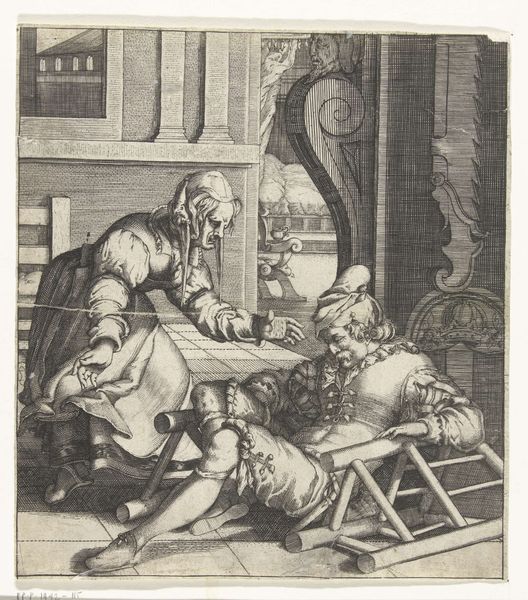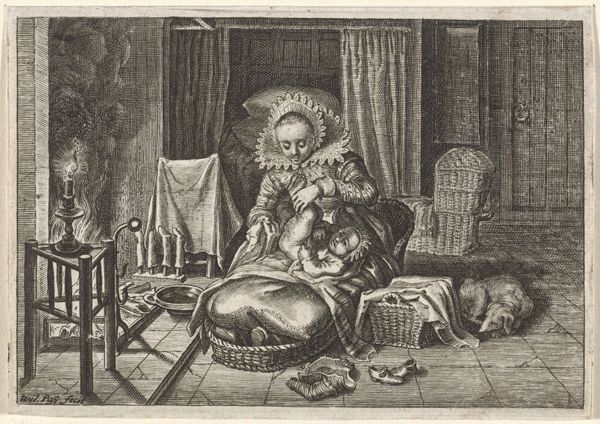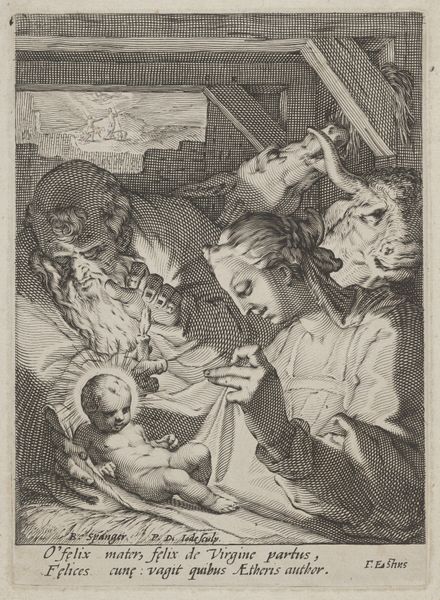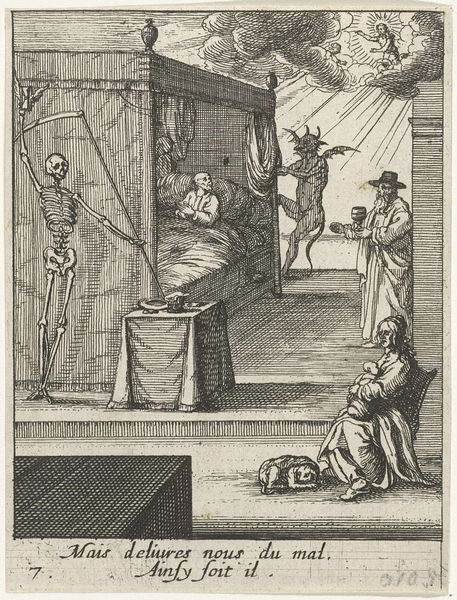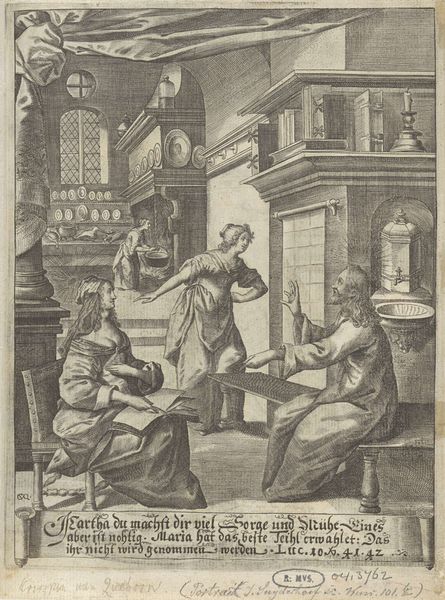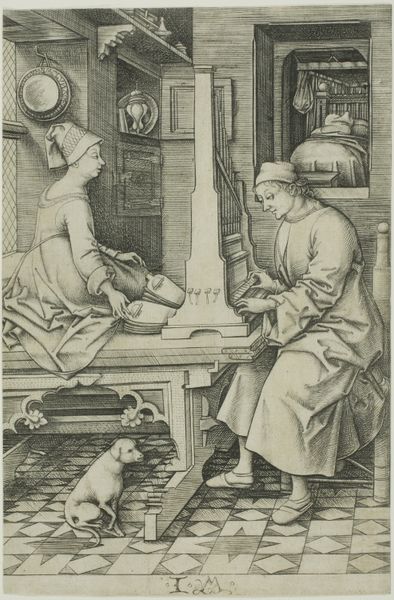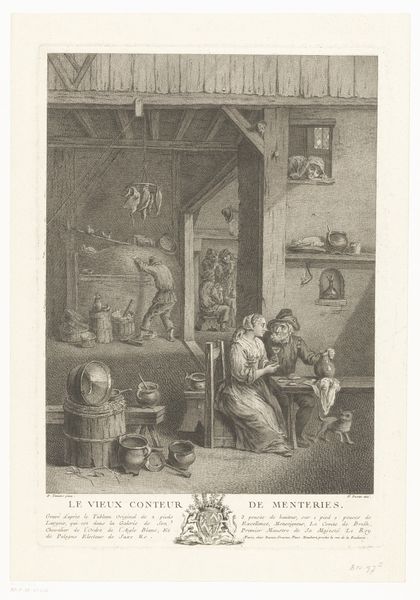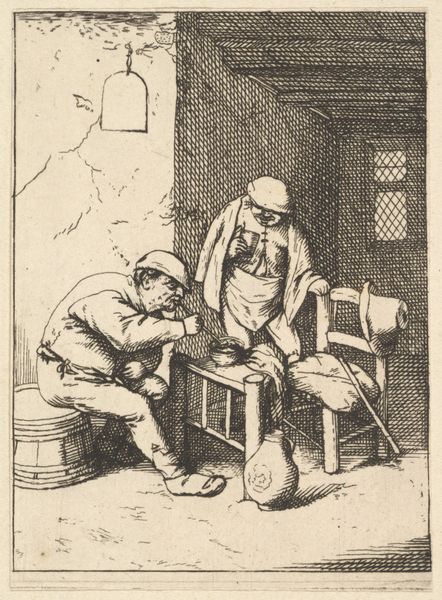
print, engraving
#
narrative-art
#
baroque
# print
#
old engraving style
#
figuration
#
genre-painting
#
engraving
Dimensions: height 210 mm, width 156 mm, height 214 mm, width 160 mm
Copyright: Rijks Museum: Open Domain
Pierfrancesco Alberti created this print, “Boy by a Fire with Monkey and Cat”, sometime in the late 16th or early 17th century. It depicts a domestic scene, but one laden with social commentary, through the use of allegory. In Northern Europe during this period, monkeys in art were often used to symbolize base instincts or foolishness. Here, the monkey pilfers from the hearth, perhaps implying a critique of greed or disorder within the household. The child, seemingly amused, may represent innocence or ignorance of the monkey's misdeeds. The setting, a simple kitchen, suggests a commentary on everyday life and perhaps the moral failings found even in humble settings. To understand this piece more fully, one could research the symbolism of animals in Renaissance and Baroque art. Prints like this circulated widely and shaped social attitudes. By examining this print, we gain insight into the cultural values and anxieties of the time, reminding us that art is always a product of its social context.
Comments
No comments
Be the first to comment and join the conversation on the ultimate creative platform.
